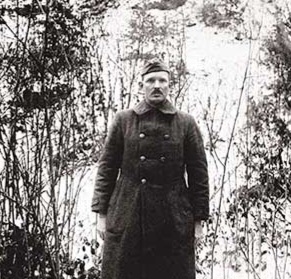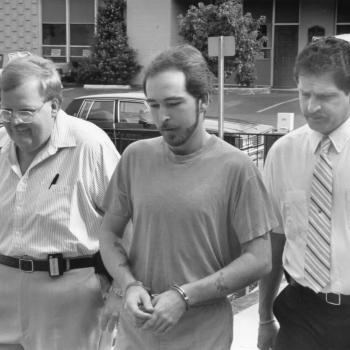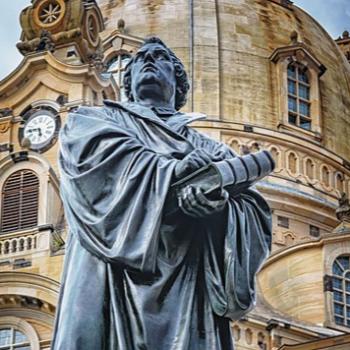
So, Who Was Sgt. York?
As the U.S. commemorates Veterans Day, I’d like to tell you the story of a Christian pacifist and war hero named Alvin York. You may not be familiar with him, but he was a skilled marksman who became the most highly decorated U.S. soldier in World War I.
A recipient of the Congressional Medal of Honor and the French Croix de Guerre, York was honored with a ticker tape parade in New York City and a movie starring Gary Cooper.
Why write about a long-dead American hero on this Veterans Day? I chose this would-be conscience objector because of his struggle between religion and duty to his country, his bravery in France in late 1918 and his contributions to education in his hometown that continue to this day.
Alvin York became a national hero, as well as an international celebrity, who finished his army service and settled on a farm near his hometown. His story resonates with me because of his accomplishments, and it doesn’t hurt that he lived near me during my childhood.
Meet Alvin York
“The story of Sgt. Alvin York is a celebrated chapter in Army history,” according to the National Museum of the United States Army. So, who was he?
York was born in 1887 to a farming family in rural East Tennessee. As the third of 11 children, he attended school for a short while, but had to end his education to help support his family, the museum said.
He worked as a laborer and helped provide food for his family by hunting and fishing with his father in the Cumberland Mountains. And when his father died in 1911, York took on the added responsibility of helping care for his younger brothers and sisters. He also became a blacksmith, as his father had been.
York attended church on a regular basis but wasn’t particularly religious as a young man. He was “fond of drinking and a good scrap,” noted the Christian History Institute. Consequently, the people in his community considered him a nuisance.
His mother belonged to a pacifist church, and York’s life changed when he became a devout Christian and embraced her pacifism in 1914. He joined the Church of Christ in Christian Union and adopted the organization’s strict moral code, which forbade violence.
And at that point, the seeds of future conflict were sown in the young man’s mind and heart.
A Conscientious Objector?
By the time the U.S. entered World War I in 1917, the conflict had been raging for three years. Millions of people were dead, and the fighting had devastated much of Europe. And with America’s entry into the war, York and millions of other young American men were required to register for the draft.
York “tried to file for an exemption as a conscientious objector,” the army museum said. “Even with a testimonial from this pastor, York’s appeal was denied three times because his church was not recognized as an official sect of Christianity.”
Some sources doubt that he claimed conscientious objector status, but I’m accepting the U.S. Army’s version of events. Ultimately, York reported for duty, but his internal struggle against the war continued.
“He appealed the order to his battalion commander, Maj. Edward Buxton,” and when Buxton quickly denied the appeal, the two men talked for hours, using the Bible to support their opposing opinions, the army museum said.
“(York) returned home to contemplate the issue and after days of prayer and reflection made the decision to follow orders and fight.” However, his opposition to the war didn’t end there, according to the museum.
His joined a unit that consisted of a hard-boiled assortment of farmers, millworkers, bouncers, bartenders and others who could out-drink and out-cuss almost anyone. They didn’t like York’s pacifist beliefs, but they mostly left him alone because he wouldn’t argue with them. His only friend was a man who enjoyed reading the Bible with him.
On the Front Lines
This young pacifist was sent with his unit to the front to join the largest U.S. operation of the war – the Meuse-Argonne offensive in France. Once there, the unit was ordered to capture the Decauville Railroad. It did not go well.
At one point, York and the others spent a rainy day and night taking cover in holes dug along a road. The bombardment was heavy, but they eventually were able to move forward.
“God would never be cruel enough to create a cyclone as horrible as that Argonne battle,” York later wrote. “Only man would ever think of doing an awful thing like that…. We had to pass the wounded. And some of them were on stretchers going back to the dressing stations, and some of them were lying around, moaning and twitching.”
His unit also saw dead soldiers lying along the road as they battled the cold rain, “It all made me think of the Bible and the story of the Anti-Christ and Armageddon,” he wrote.
“Germans had laced the Argonne Forest with machine guns,” according to the U.S. history magazine American Heritage. “A cold October turned roads into muck. Advances expected to make eight miles a day made only three…. For three days, troops regrouped, and officers reconsidered.
“When the offensive resumed, a single soldier among the 820,000 would become the most celebrated hero in American military history,” the magazine said.
Birth of a Legend
York’s unit found itself behind enemy lines because the map they were using was written in French, which none of them understood. Not surprisingly, they encountered a German unit, the army museum said.
The Americans won a short firefight and captured several enemy soldiers. One German fired straight at York, but missed and York killed him. However, the German prisoners soon realized the Americans’ mistake and began yelling to other Germans manning machine gun nests.
The German gunners immediately fired on York’s unit and took down nine American soldiers, including York’s superiors. At this point, York had to assume command of his unit.
“As soon as the machine guns opened fire on me, I began to exchange shots with them,” York later wrote. “There were over thirty of them in continuous action, and all I could do was touch the Germans off just as fast I could.”
York and seven privates survived the initial burst of gunfire. The terrain was wooded and rough, and according to the army museum, “York used the skills he had learned hunting in the mountains of Tennessee to work his way toward the (closest machine gun nest,) slowly and calmly approaching the enemy position.”
His progress was stopped when he was caught in the open by fire from 20-30 machine guns. And at another point, five or six Germans rushed him with bayonets. “With no rounds left in his rifle, he shot each of them with his pistol before they could reach him,” the Christian History Institute said. “During the melee the German commander, First Lieutenant Paul Jurgen Vollmer, emptied his pistol at York. Every shot missed.”
York “soon forced the remaining Germans to surrender, and later claimed even more prisoners on his way back to the American lines…. All told, York and his men captured 132 enemy soldiers, and he may have singlehandedly killed around 20 German troops.”
In war, it was kill or be killed.
York was soon promoted to sergeant and earned the Congressional Medal of Honor and some 50 other citations, according to Military.com, a news and resource website for active members of the military, veterans and their families.
“The victory itself was relatively small amid the colossal events of World War I,” according to the Christian History Institute. “But the story of York took on a life of its own,” and he became a bona fide American hero.
A Quieter Life
Alvin York returned home to a hero’s welcome in New York. Hollywood then came calling, but he declined their pleas for rights to his story.
He married and settled in his hometown, Pall Mall, TN. Although he wanted to live a quiet life, York had discovered the new industrial world when he joined the army. He wanted to bring that world to his hometown in order to “prepare the next generation for an increasingly industrial world.”
The Alvin York Institute
York had little education because of his family’s circumstances, but he wanted to offer young people in his community better opportunities to learn. Thus, he founded the Alvin C. York Agricultural Institute in 1926.
He raised some of the money to support the school from private resources and lobbied the Tennessee legislature for additional funds. Classes began in 1929, and the school now has approximately 700 students.
The York Institute is located in Jamestown, some 10 miles from York’s home in Pall Mall. It was originally a private agricultural school, but the state of Tennessee now operates it as a public high school. It’s the only comprehensive secondary school in the U.S. that is funded and operated by a state government.
The school has received several national honors, including the National School of Excellence Award, and has been named one of America’s Best Schools.
Its most famous graduate is Roger Crouch, an astronaut and scientist who flew on two NASA space shuttle missions. He holds a bachelor’s degree in physics from Tennessee Tech University and master’s and doctorate degrees, also in physics, from Virginia Tech.
York Bible School
After founding the York Institute, Sgt. York remained out of the spotlight until Hollywood came calling again. This time he allowed producers to make a movie about him.
He wanted it to focus on his post-war years, but not surprisingly, Hollywood producers were more interested in his exploits in World War I.
“Sergeant York” starring Gary Cooper was released in 1941 and became the highest-grossing U.S. film during World War II. It’s fictionalized to some degree, but that’s to be expected.
York apparently agreed to the movie because he was trying to raise funds for a Bible school near his home in Pall Mall. He used money from the movie and other sources to fund construction, and the school opened around 1944.
For York, it was a religious institution that also taught trades to people in his community. “These are folks that may not have gone to school at all, and they could learn a trade, a skill to better their life,” explained Neil Dodson, manager of the Sgt. Alvin C. York State Historic Park.
York was the driving force behind the York Bible School, and attendance declined when his health began to fail. The school closed in 1964 when he died, and his widow, Gracie, sold the homesite and other property to the state of Tennessee in 1974. The area then became the historic park, Dodson said.
A War Hero & Educator
Alvin York suffered a cerebral hemorrhage in 1954 and was disabled for the remainder of his life. He died in Nashville, TN, on Sept. 2, 1964, and was buried in Pall Mall. I became aware of Sgt. York through frequent news reports about his declining health and stories that my family told about him.
“Today his legacy in combat and education still lives on,” the army museum said. “Though a war hero, York wanted to be remembered as an educator focused on helping prepare future generations for an ever-changing world.”
York’s heroism in World War I captured a great deal of attention 100 years ago, but his lasting legacy is his work in education — just as he wanted.
Learn More about Alvin York
“American Heritage” provides a detailed account of York’s life and war experiences. To read it, click here.
You may read the National Museum of the United States Army’s article on York here.
The Christian History Institute also provides information about him here.

















